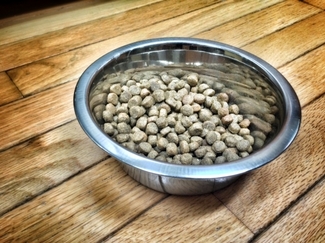When meeting with a family for the first time, one thing that I am keenly observant of is how naturally attentive a dog is to their people. This gives me a lot to go on as I'm getting to know my prospective charge. If the property has a fence, I suggest heading outdoors to play off leash.
In doing so, it helps me understand what sort of things will garner attentiveness toward me, especially if they don't offer it easily.
As a caregiver, much of what I do is all about relationship building, and from that, everything else follows: trust, bonding -- and an environment of cooperation.
The latter is vital, as the single most important aspect of my job is to keep a pet safe. If their attention is on me when a situation arises that may cause their safety to be compromised, that can make all of the difference.
Consider the dog that has a habit of bolting out of an open door, or when a pet is safely able to be outdoors off-leash. Trying to connect with a pet while giving a command like "sit", "stay" or "come" is impossible without having their full attention.
It seems important to say that the foundation for training, not to mention daily interaction is built on the concept of attentiveness.
While some dogs offer it effortlessly, others are easily distracted by things, or perhaps or have difficulty in connecting with people. I've met canines that simply lack connection with some people in their tribe. That's not to say that attentiveness can't be learned by a dog if they aren't so good at offering it. With the practice, they can gain the skill.
The best way to lay the groundwork when it comes to fostering attentiveness from your pooch is simple: build your relationship with them. By interacting with each dog one-on-one with activities like play, walks, brushing, talking to them -- anything that they find satisfying -- and then the connections begin.
Once that relationship has been supported positively, working on attentiveness is a simple task, though being consistent is where the magic lies.
There are two common cues used to teach the skill: “watch” and then of course the dog’s name.
“Watch” signals a dog to look at you, and saying her name lets her know that she should pay attention to you and wait for what's next.
When I get a pet's full attention, I always immediately follow up with a treat to reinforce the skill. This increases the likelihood that I'll get that favored response in the future, and of course sets them up for success.
Once they get the hang of it, feel free to use a favorite game, a belly rub or something specifically valuable to the pooch to alternate with a treat as a reward. Eventually, you should be able to ask for their undivided attention and it will be like second nature to them.
Teaching this valuable skill makes it easier for a dog to respond to other important cues, like “down,” “stay” and “come,” or simply to follow in a different direction while out on a walk.
Working on this essential building block of communication enhances the success on another vital skill: recall.
As with recall and other cues, I highly recommend "proofing" attentiveness in different environments regularly. Remember, simply because a dog has learned a skill in one scenario, it doesn't mean that they can apply it to another as easily. Work on it everywhere: indoors, while outdoors with varying levels of distraction. Practice makes perfect.
Lorrie Shaw is a freelance writer and owner of Professional Pet Sitting. Shoot her an email, contact her at 734-904-7279 or follow her adventures on Twitter.





